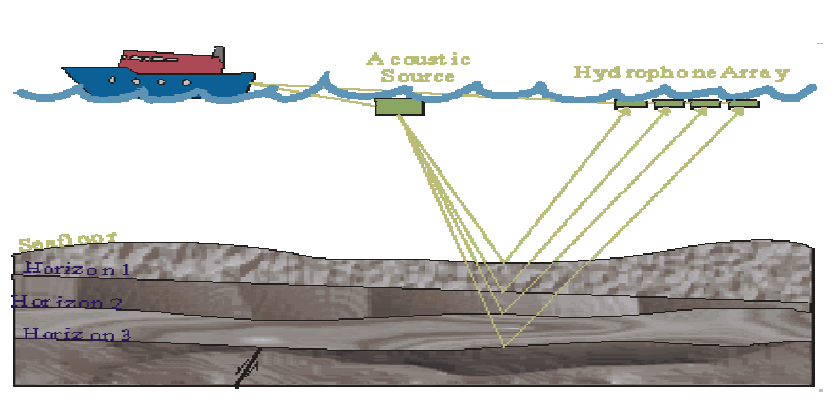The Best Solution to Monitor Your Fleet
SEISMIC SURVEYING
Background to Seismic Surveying
Mechanical disturbance in the water column generates compressional acoustic waves. The signature of the acoustic signal depends on the type of acoustic source. when the acoustic energy is incident on the seabed, it is either totally reflected or partially reflected and transmitted through the sub-seabed depending on the nature of the signal and transmitting medium.
The acoustic impedance is a function of physical characteristics of teh sediment. Any change the the physical nature will influence the acoustic transmission and reflection through the sediments. The reflected signals are received by the pressure sensitive connected to the recording/precessing system.
Durring processing, the raw signals are filtered and amplified the enhance the signal to noice ratio.
A sub-bottom profiling system consists of a sound source which generate a sound pulse at a contolled rate directed towards the seabed by discharging energy stored in a bank of capacitors; a highly sensitive hydrophone, or serise of transducers, which pick up the echoes of the sound pulses reflected from the seabed and its underlying layers; a singnal receiver section which processes the incoming hydrophone signal through band pass filter, gain control, varied gain control and swell filter, and a high speed grphic recorder capable of converting the signal amplitude levels and print them as grey levels.
The sound pulse reflected off the sub-botton layers when printed in th above manner produces a continous image of the interface between the layers. The differnet signal signaures generates by various types of geological strata give an indication of the type of material, constituting them in many cases.



